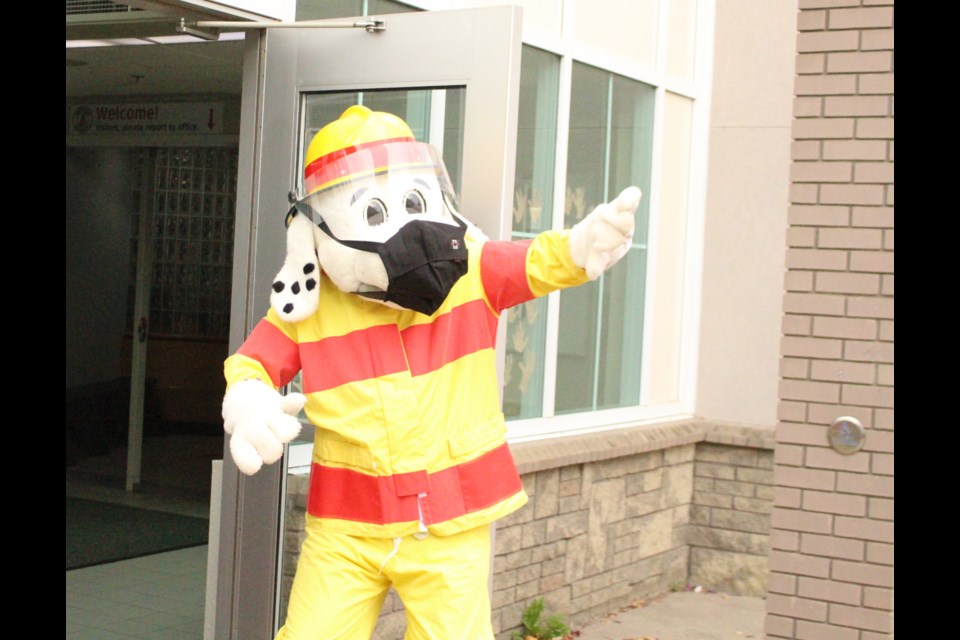BONNYVILLE – On Wednesday, Bonnyville’s Regional Deputy Fire Chief Dan Heney and his partner in fire prevention, Sparky, arrived at Duclos school to run a practice fire drill and bring students from kindergarten to Grade 4 materials and activities teaching them about fire prevention.
“One week out of the year, we get to go wild and show kids what it means to be firefighters,” said Heney.
Oct. 3 – 9 was Fire Prevention Week and although the celebrations and community outreach has been subdued this year due to the pandemic, Heney says the crews are glad to be able to get back in schools – even if it is only in a limited capacity.
Prior to COVID, crews and volunteer firefighters would attend school assemblies, quiz kids on fire safety and give out prizes. "We could show kids that firefighting is more than putting the wet stuff on the red stuff,” he said.
This year, however, crews are dropping off bags filled with age-appropriate materials and activities for every student from kindergarten to Grade 4 at Duclos school, École Notre Dame Elementary and École des Beaux-Lacs school.
This is a step up from last year, when all community events had to be cancelled during Fire Prevention Week.
Heney says, one downside of not being able to interact with students in the classroom is that the department isn’t able introduce volunteer firefighters to the kids.
"Any youth in this building, at some point down the road could become a firefighter with a local station or wherever they live, whether it be in Fort Kent or Ardmore. Anywhere in the area where we have a fire station, they can be a part of that if they want. So, this is our opportunity to really showcase that we're not only responding when the alarms go off, that we're a part of the community,” expressed Heney.
A lot of the youth engagement is about the long game, he says. “It's about changing people's behavior. If you start when they're young, we hope that we can convince people that it's worthwhile making those (fire safe) decision down the road.”
Referencing an old cliché, Heney says, “There's a certain time where you have to put childlike things away. Well, unfortunately, one of those childlike things is to do the right thing in emergency situations.”
Kids often respond to alarms and emergency drills much quicker than adults, who can sometimes grow desensitized to alarms. The goal is to prevent that by maintaining an education presence in the minds of children as they get older, and reinforce acting immediately when they hear an alarm, Heney says.
“It's serious when your smoke detector goes off. It is designed to warn you when you have somewhere between two and three minutes of safe atmosphere. To take anything longer than three minutes, it's going to get to a point where it's incredibly dangerous. Every breath you take in will be hot gases and smoke in a real emergency.”
He adds, “Fire preparedness and prevention measures are one of those things that it is easy to say, ‘Well, it's never happened to me, so I don’t have to worry about it.’” The problem with that thinking is that you can’t predict when an emergency situation will occur.
“We don't do things that we do because we're trying to prey on people's fears. It's about educating them on the risks.”
Residents should always consider their own risks, whether they have a fireplace in their home or if they are shooting off fireworks outdoors.
“Are people making unnecessary risks? I will leave that for them to determine,” said the regional deputy fire chief. “But our job is to consider the risks at all times.”



